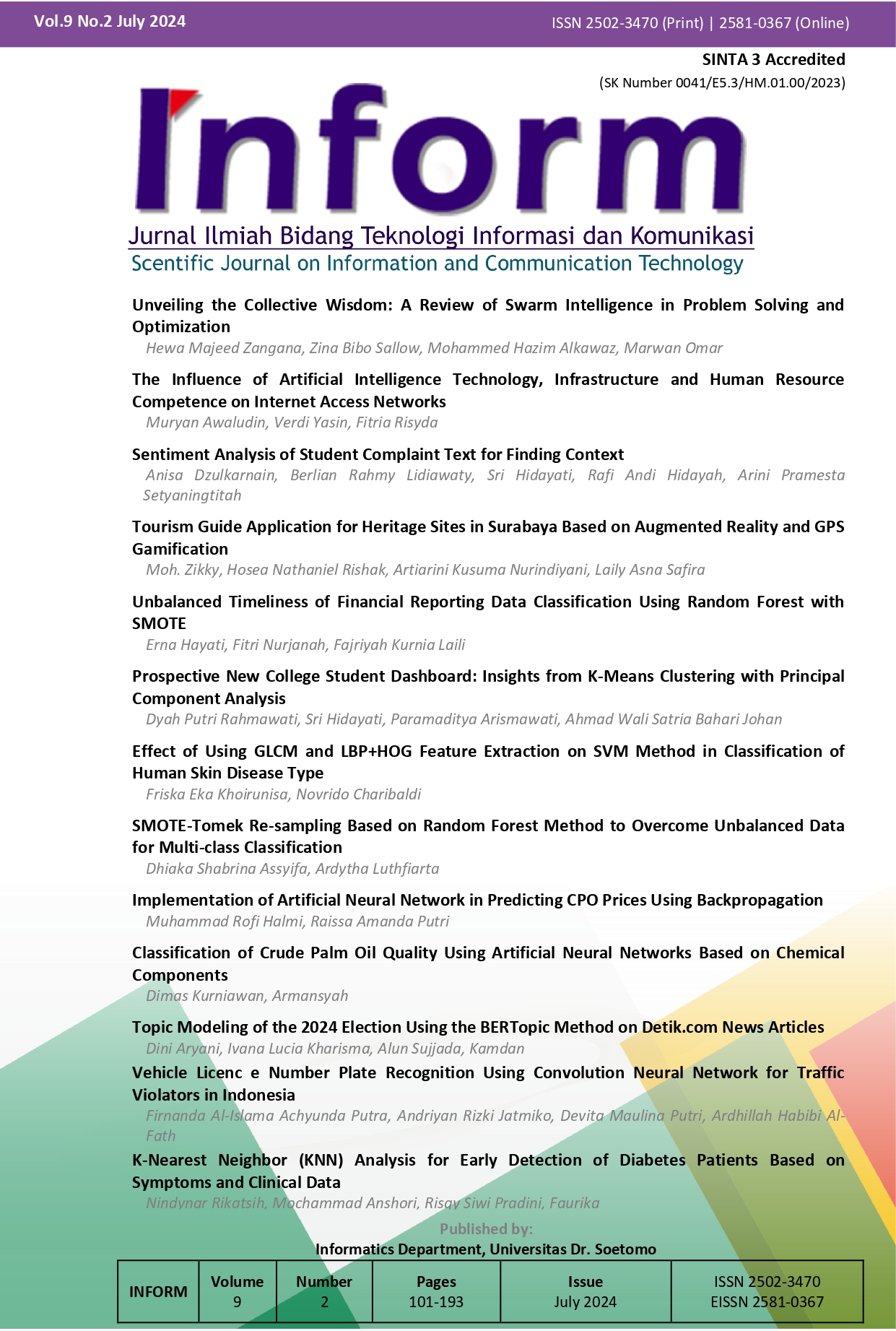Tourism Guide Application for Heritage Sites in Surabaya Based on Augmented Reality and GPS Gamification
 Abstract views: 257
,
Abstract views: 257
,
 PDF downloads: 163
PDF downloads: 163
Abstract
One of the most important revenue streams for the nation's economy and development is tourism. The COVID-19 pandemic is, however, causing a reduction in tourism in Indonesia; Surabaya, the country's second-largest city, has seen a drop in visitors from 6.5 million to 500 thousand. To solve this problem, an innovation is required to boost the number of visitors to Indonesia's heritage sites who use contemporary technology, specifically smartphone with interactive media (with AR and GPS for instance). The author will develop an app that, depending on the user's location, will let them visit several Surabaya heritage sites and provide them with comprehensive details and instructions. Indonesia can stimulate its economy and return visitors to its heritage sites by employing this interactive gamification apps. However, on the examination to the user, we found a good implementation in detecting and measuring the nearest destination to the current user position, and how to parse into google map and guiding the destination to that heritage site. But we have some distraction when pointing the apps to the Augmented Reality (AR) marker on the site, since various historical places have various lighting, some devices are unable to take a clear picture of the marker due to its lack of lighting and abnormal size or form. Thus, it will be effective when the user points his smartphone camera to the AR marker, he/she supposed to use the smartphone lighting as well.
References
Regina Martha, Strategi Dinas Pariwisata Kota Surabaya Dalam Meningkatkan Kunjungan Wisatawan (Studi Pada Wisata Monumen Kapal Selam Surabaya), Undergraduate thesis, Universitas 17 Agustus 1945. Surabaya, 2021.
Rafika Rachma Maulidini, Tahun Depan, Pemkot Surabaya Fokus Kembangkan Transportasi Pariwisata, [Online], available on: https://www.jawapos.com/surabaya/05/10/2021/tahun-depan-pemkot-surabaya-fokus-kembangkan-transportasi-pariwisata/
Open Data Surabaya, Jumlah Kunjungan Objek Wisata di Surabaya, [Online], available : https://opendata.surabaya.go.id/lt/dataset/3300-5033-286.
Faidurrohman, Madura Introduction Game to Increase Tourism Using Augmented Reality, Electronic Engineering Polytechnic Institute of Surabaya, 2022.
Yulizar Rahman, Eka Wahyu Hidayat, and Rahmi Nur Shofa, Augmented Reality Mobile Game Ucing Sumput Using GPS Based Tracking, SIMETRIS, vol. 11, no. 1, pp. 263 - 270, April 2020.
Azuma, Ronald T. A survey of augmented reality, Presence: teleoperators & virtual environments 6.4, pp. 355-385, 1997.
A. B. Craig, Understanding augmented Reality: concepts and applications. 2013. [Online]. Available: http://ci.nii.ac.jp/ncid/BB14977821
Faidurrohman, Madura Introduction Game to Increase Tourism Using Augmented Reality, Electronic Engineering Polytechnic Institute of Surabaya, 2022.
Yulizar Rahman, Eka Wahyu Hidayat, and Rahmi Nur Shofa, Augmented Reality Mobile Game Ucing Sumput Using GPS Based Tracking, SIMETRIS, vol. 11, no. 1, pp. 263 - 270, April 2020.
T. Rustagi and K. Yoo, Indoor AR navigation using tilesets. 2018. doi: 10.1145/3281505.3281575.
R. Hidayatulloh and P. Airlangga, “Integrasi Mapbox dan Google Map untuk Menunjang Fitur tambahan pada system informasi geografis,†Exact Papers in Compilation (EPIC), vol. 4, no. 1, pp. 491–496, Apr. 2022, doi: 10.32764/epic.v4i1.648.
S. A. Tambunan, “Rancang Bangun Aplikasi Peta Interaktif Universitas Sumatera Utara Menggunakan Mapbox SDK Berbasis Android,†Repositori Institusi Universitas Sumatera Utara, Jan. 2019, [Online]. Available: https://repositori.usu.ac.id/handle/123456789/16754
M. Chaudhary, G. Singh, L. Gaur, N. Mathur, and S. Kapoor, Leveraging Unity 3D and Vuforia Engine for Augmented Reality Application Development. 2023. doi: 10.1109/ictacs59847.2023.10390072.
Manish Kumar, Santosh Kumar Singh, and Dr. R. K. Dwivedi, A Comparative Study of Black Box Testing and White Box Testing Techniques, IJARCSMS, vol. 3, issue 10, pp. 32-44, 2015.
Y. Zhauniarovich, A. Philippov, O. Gadyatskaya, B. Crispo, and F. Massacci, Towards black box testing of Android apps. 2015. doi: 10.1109/ares.2015.70.
C.-C. Yeh, S.-K. Huang, and S.-Y. Chang, A black-box based android GUI testing system. 2013. doi: 10.1145/2462456.2465717.
Copyright (c) 2024 Moh. Zikky, Hosea Nathaniel Rishak, Artiarini Kusuma Nurindiyani, Laily Asna Safira

This work is licensed under a Creative Commons Attribution-ShareAlike 4.0 International License.
Authors who publish with Inform: Jurnal Ilmiah Bidang Teknologi Informasi dan Komunikasi agree to the following terms:
-
Authors retain copyright and grant the journal right of first publication with the work simultaneously licensed under a Creative Commons Attribution License (CC BY-SA 4.0) that allows others to share the work with an acknowledgment of the work's authorship and initial publication in this journal.
-
Authors are able to enter into separate, additional contractual arrangements for the non-exclusive distribution of the journal's published version of the work (e.g., post it to an institutional repository or publish it in a book), with an acknowledgment of its initial publication in this journal.
-
Authors are permitted and encouraged to post their work online (e.g., in institutional repositories or on their website) prior to and during the submission process, as it can lead to productive exchanges, as well as earlier and greater citation of published work.













